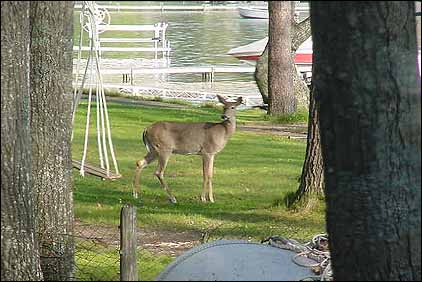Deer are probably the most widely distributed and best-recognized large mammals in North America. The white-tailed deer (Odocoileus virginianus) is found throughout much of North America. The mule deer (O. hemionus)is primarily a western species restricted to buttes, draws, and stream bottoms with sufficient forage. The black-tailed deer (O.h. columbianus) is a subspecies of the mule deer. Both white-tailed and mule deer are very important game animals. Continue reading Deer Impacts in Urban Environments
Tag: Urban Deer
Identification of Deer Damage
Deer damage a wide variety of row crops, forage crops, vegetables, fruit trees, nursery stock, and ornamentals, as well as stacked hay. In addition to the immediate loss of the crop being damaged, there is often residual damage in the form of future yield reduction of fruit trees or forage crops such as alfalfa.
Ornamental trees or nursery stock may be permanently disfigured by deer browsing. Under high densities deer may severely impact native plant communities and impair regeneration of some forest tree species. Besides vegetative damage, deer/ vehicle collisions pose a serious risk to motorists, and deer have been implicated in the distribution and transmission of Lyme disease. Continue reading Identification of Deer Damage
